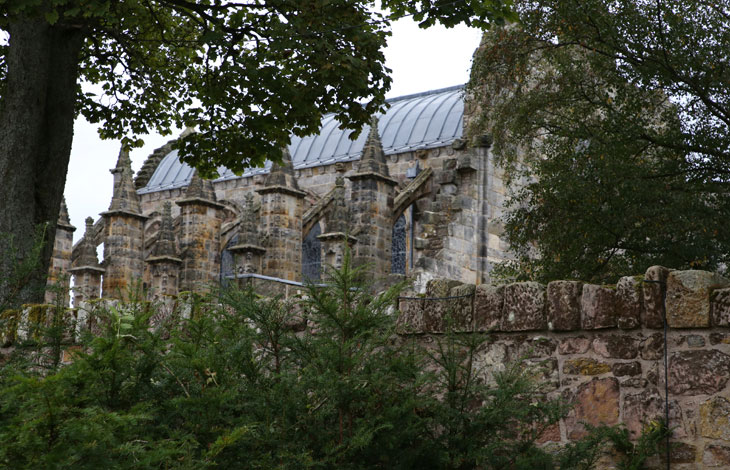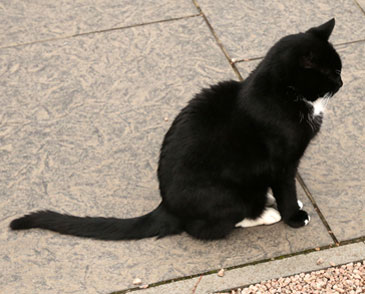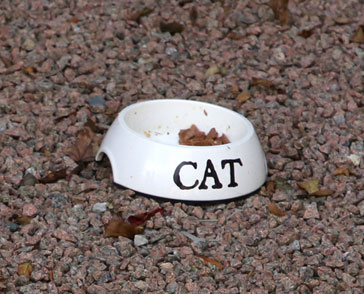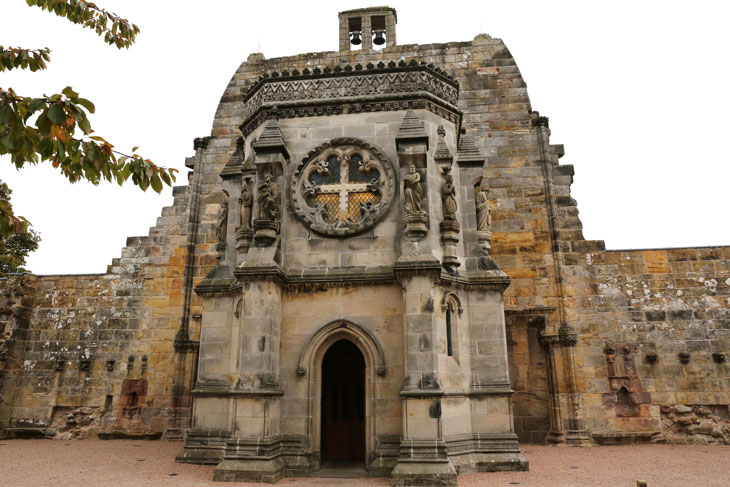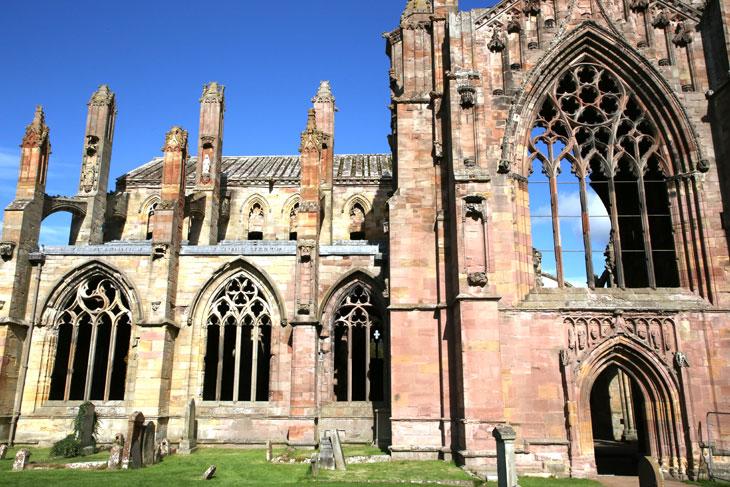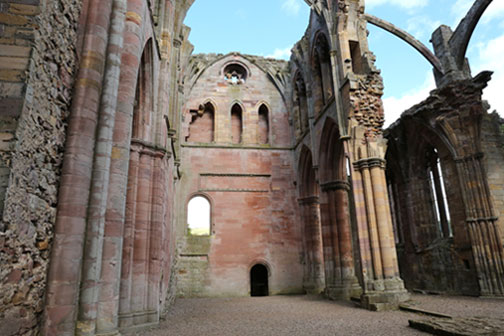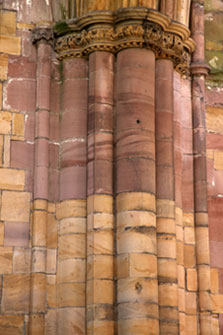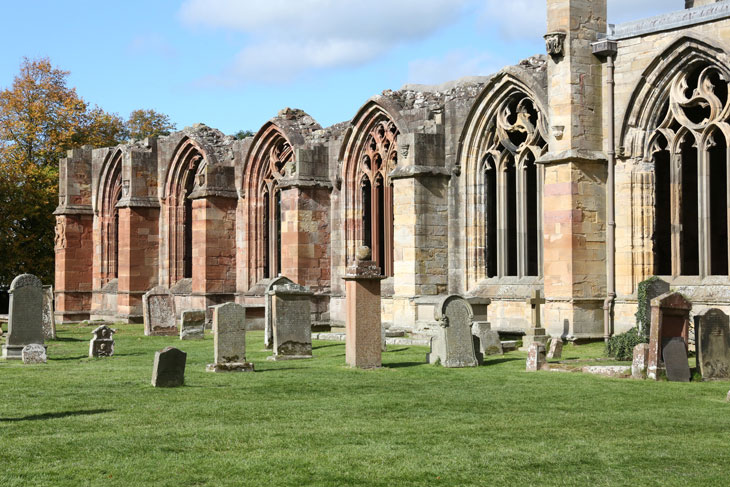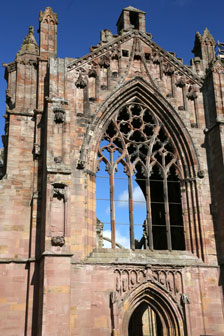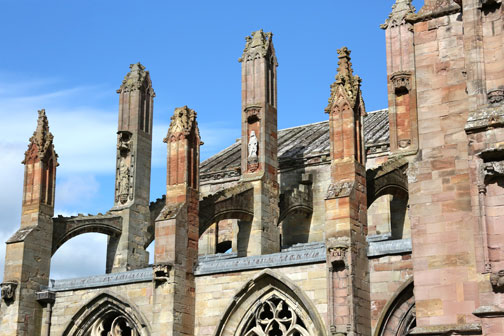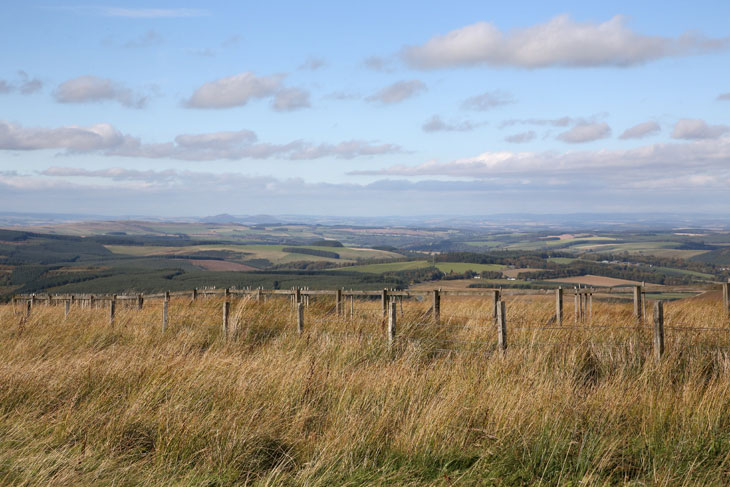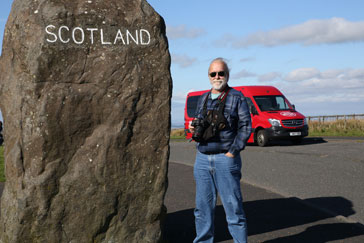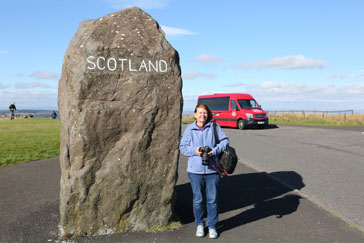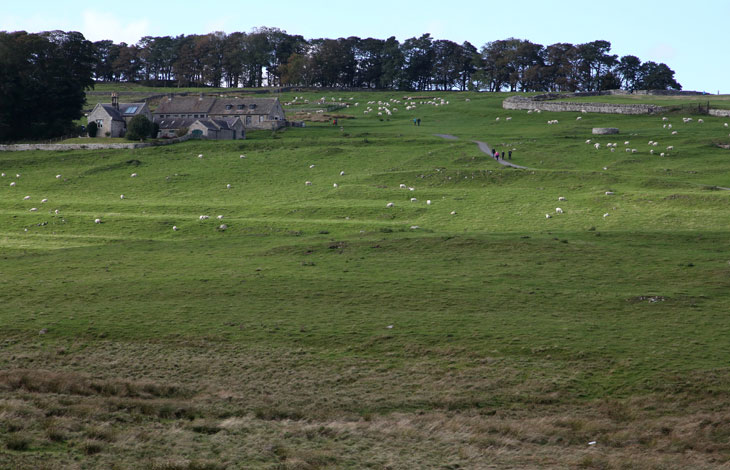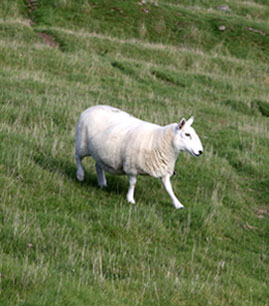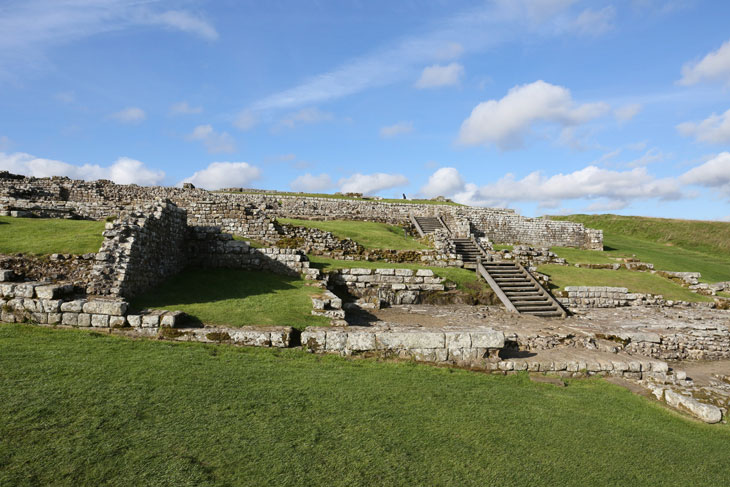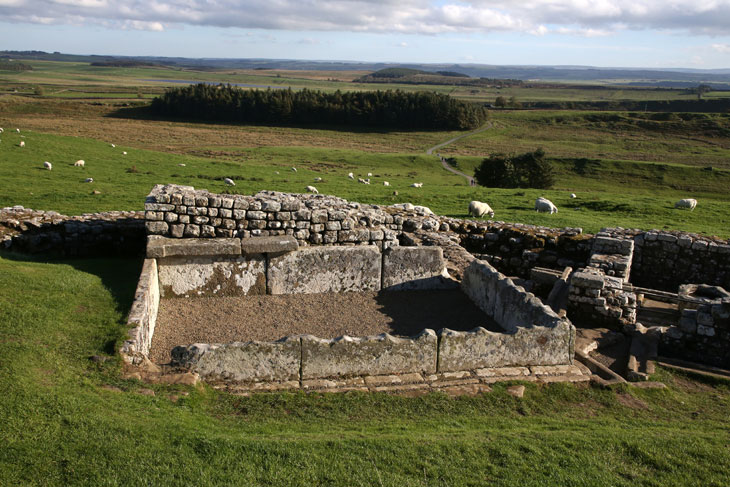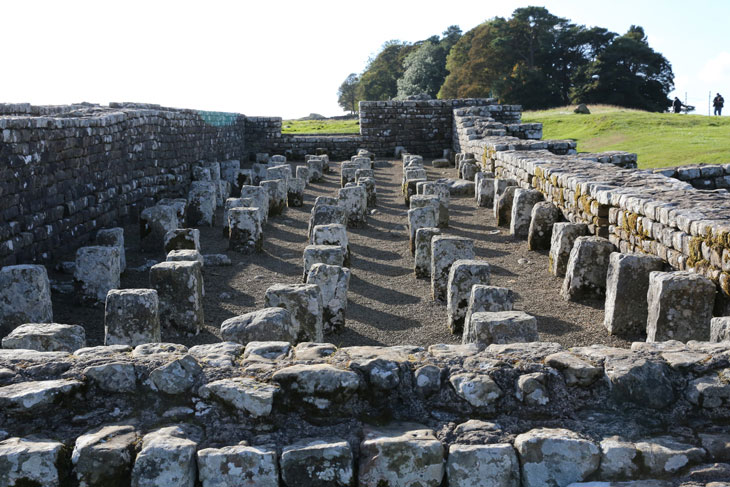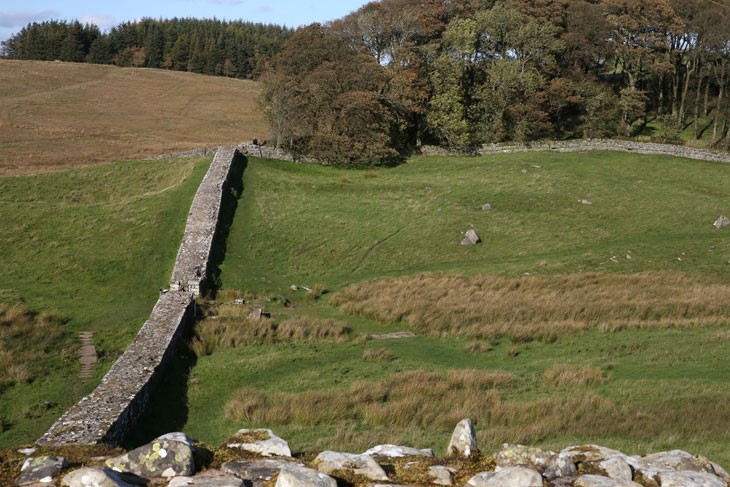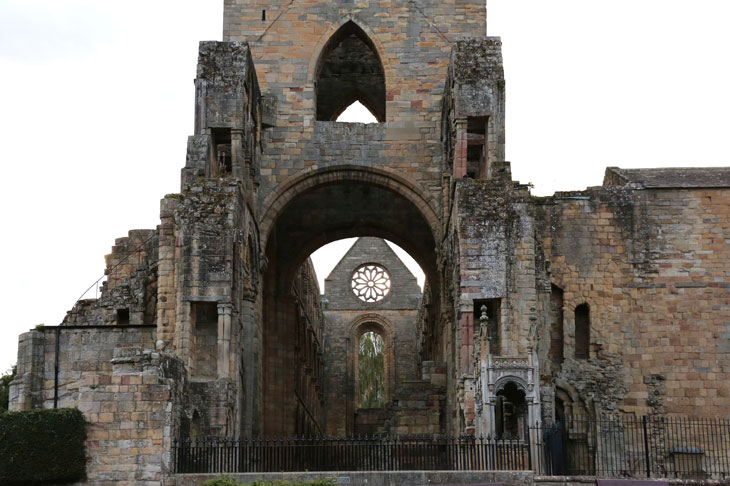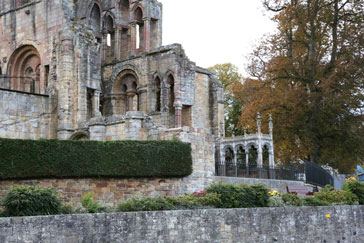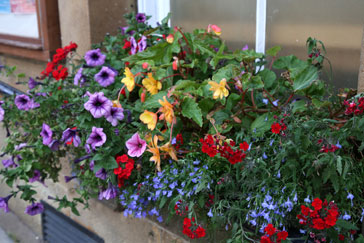Childhood Dreams
Borders Tour
The possibility of seeing a section of Hadrian's Wall was intriguing. During the reign of
the emperor Hadrian, the wall stretched 73.5 miles from the North Sea to the Irish Sea and marked
the northern extent of the Roman empire. A tour seemed to be our best option for getting
to a section of the wall, so we booked one that departed from Edinburgh.
The tour description assured us that the vehicle we would travel in was an air-conditioned
Mercedes minivan, but since the day was quite cold, we were more concerned with its
heat generating capabilities. Our bus followed about 15 minutes behind another one on the same tour
led by a guide decked out in a kilt. The sight of his cold red legs made
me shiver everytime I saw him so I was glad that our own affable, knowledgeable guide was
dressed more sensibly for the frosty weather.
The tour began at a place I would never have thought about going - Rosslyn Chapel. The chapel
featured prominently in Dan Brown's book, "The Da Vinci Code", and scenes of the
subsequent movie were shot there, but since it's not the
kind of book or movie I enjoy it didn't occur to me to want to visit.
Our bus arrived at the site a bit early so our guide escorted us to the ruins of 14th
century Rosslyn castle nearby.
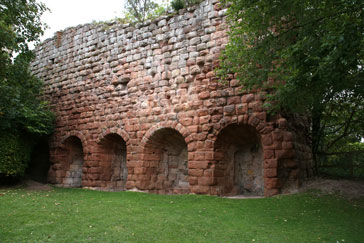
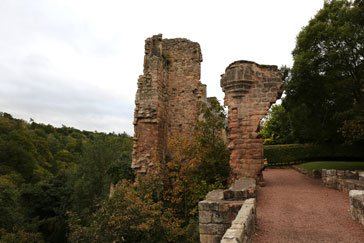
We had a quick look around and then returned to the chapel. I don't think I've been so impressed with an historic church
since we visited the cathedral in Aachen.
The chapel was Catholic when William St. Clair began its construction in the mid 15th Century, but public Catholic
services came to an end after the Scottish Reformation. It was re-opened to the public as a Scottish
Episcopal Church in 1861.
The building is covered with stone carvings outside, and there are even more inside. On the left is a model of a lion water
spout that resembles one on the exterior of the chapel.
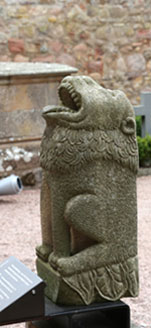
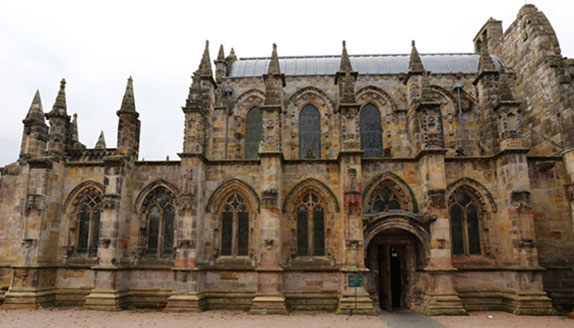
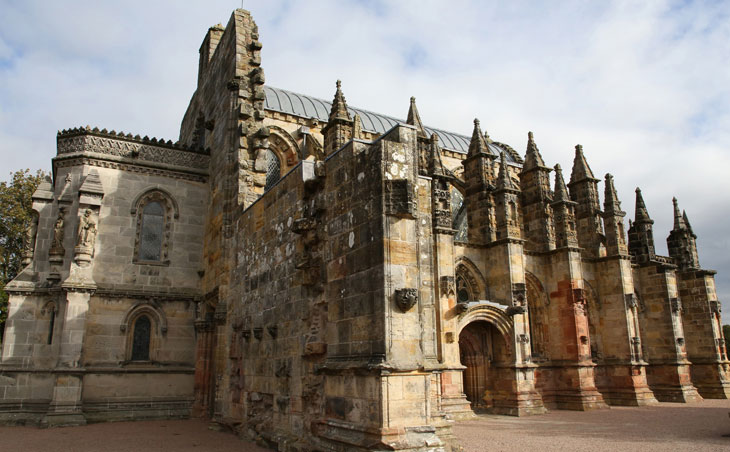
When you walk inside the building you are confronted with an astonishing number of carvings everywhere
you look. You are not supposed to take pictures, but Walt sneaked a few which will give you some idea
of how the interior looks. There are images with religious themes, animals, masonic symbols, gargoyles,
plants, pagen figures like the "Green Men" (human faces with vegetation spouting from them) and much,
much more.
The pillar in the picture on the left is known as the Apprentice Pillar. The story is that the
master mason went to Rome seeking inspiration when he was working on the chapel. While he was gone,
his apprentice created this ornate pillar, and when the master returned and saw the outstanding work,
he flew into a jealous rage and killed
the apprentice. As part of his punishment, a likeness of the master mason's face was
carved in a location where it is forced to look upon the pillar.
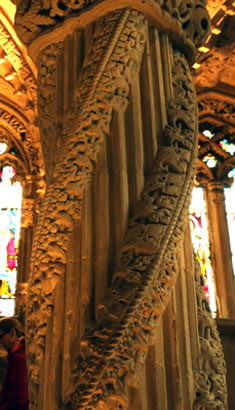
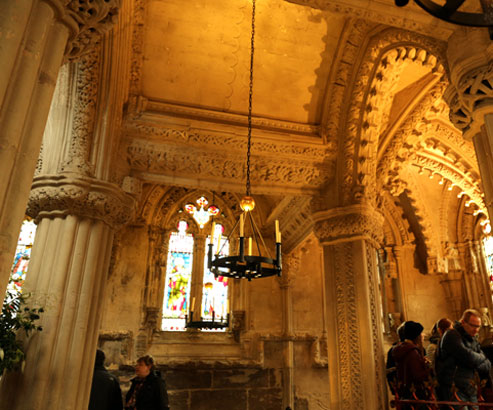
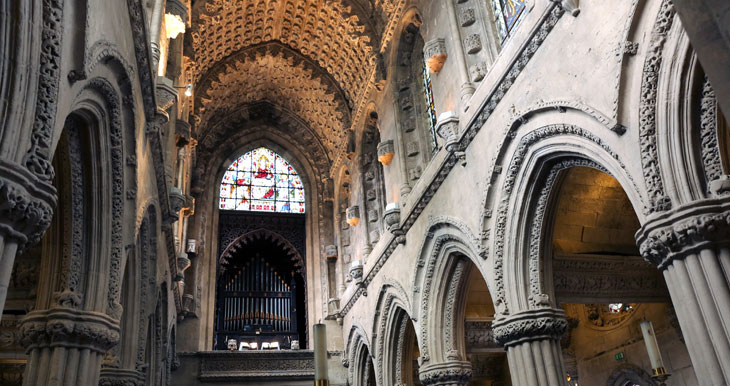
The chapel is also home to a cat named William. He was snoozing on one of the pews during our visit and
later made a guest appearance outside.
This is the front entrance to the building which is not used. People enter
and leave from the side.
Rosslyn Chapel is not far from Edinburgh. I would definitely recommend a visit if you are in the area.
The next stop on the tour was the town of Melrose. Most of the group headed to the high street for lunch,
but we weren't very hungry so we decided to take a look at the ruins of Melrose Abbey. The abbey is said to
be the resting place of the heart of Robert the Bruce.
I admired the lovely pink hue of the stones.
Next we made a quick stop at the border between England and Scotland and took pictures of each other as the
wind whipped our hair around. The red van in the background is "The Wee Red Bus" which transported us on this
journey.
The fierce wind was also whipping across the hills at Housesteads Roman Fort, but the sheep grazing
contentedly among the ruins didn't seem to notice. We trudged doggedly up the steep hill to the site.
Eight hundred men were once garrisoned here, and a town flourished outside the gates of the fort. Today the
landscape is mostly empty, and the area is a national park. The building on the left in the picture below houses
a museum with information about the fort and the wall.
The fort once encompassed a barracks block, hospital, Commander's House, granaries, and communal toilets.
In Hadrian's day there were 16 forts along the wall.
The stones in the photo below supported the floor of the fort's granary. The floor was elevated to keep the food dry and
protect it from rodents.
The wall stretches out across the countryside from the fort.
Contrary to popular belief, it lies entirely within England and never delineated the border between England and Scotland.
It's main purpose was probably to deter the Picts in Southern Scotland, but it also controlled the flow of people north and south
and enabled the Romans to collect customs from anyone who entered Roman territory.
On the way back to Edinburgh we made a quick stop at Jedburgh Abbey. It was quickly becoming obvious that there are
ruins everywhere in Great Britain.
I enjoyed this tour very much, and I'm especially happy that we got to visit Rosslyn Chapel.


